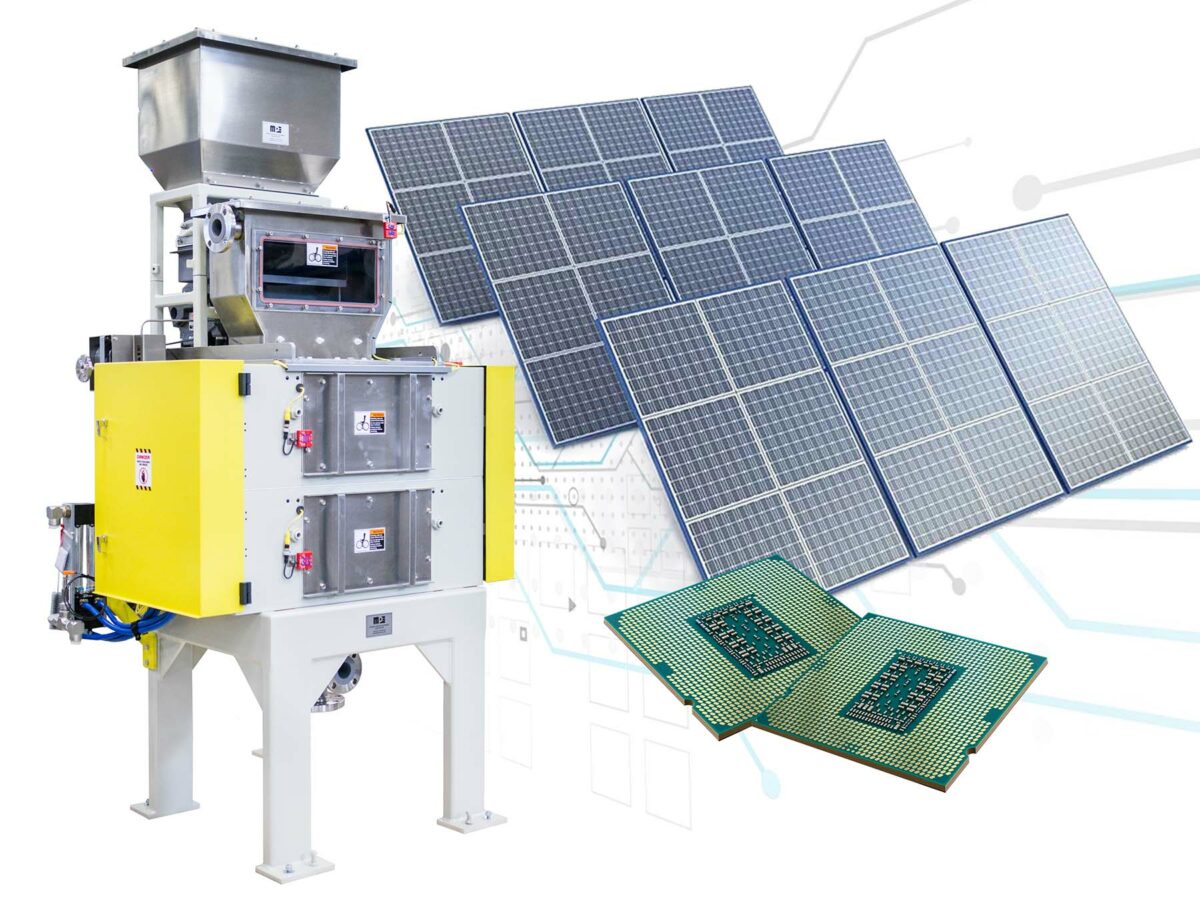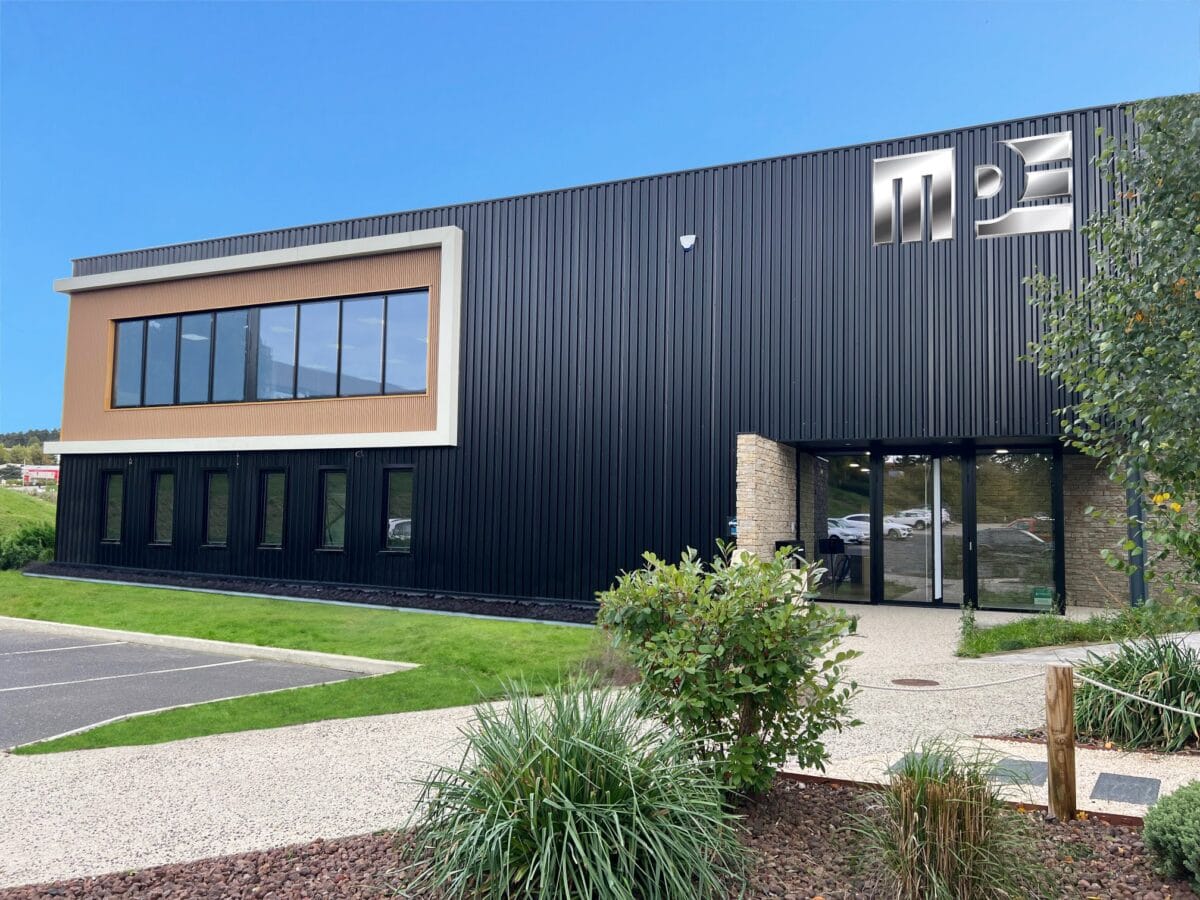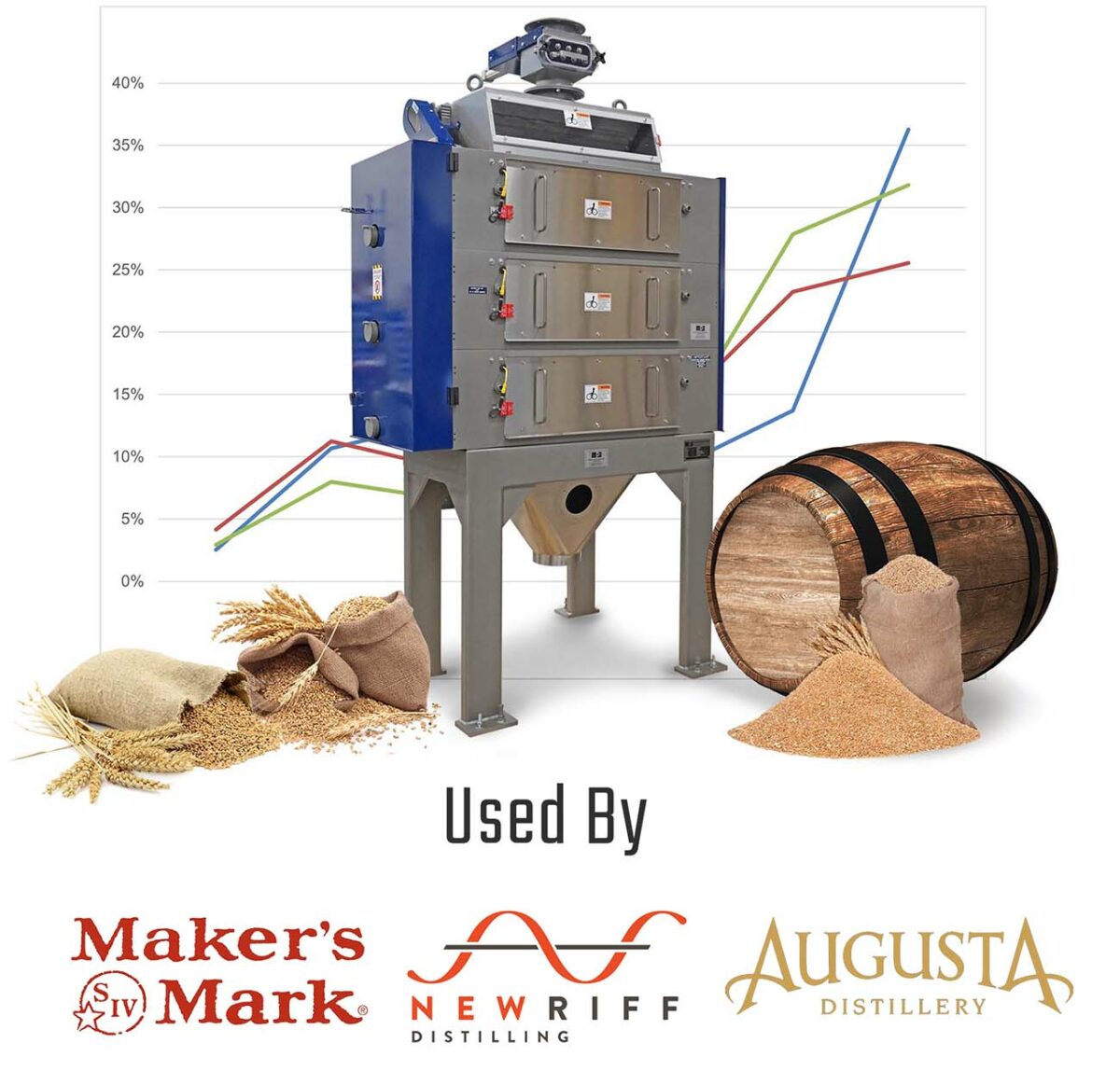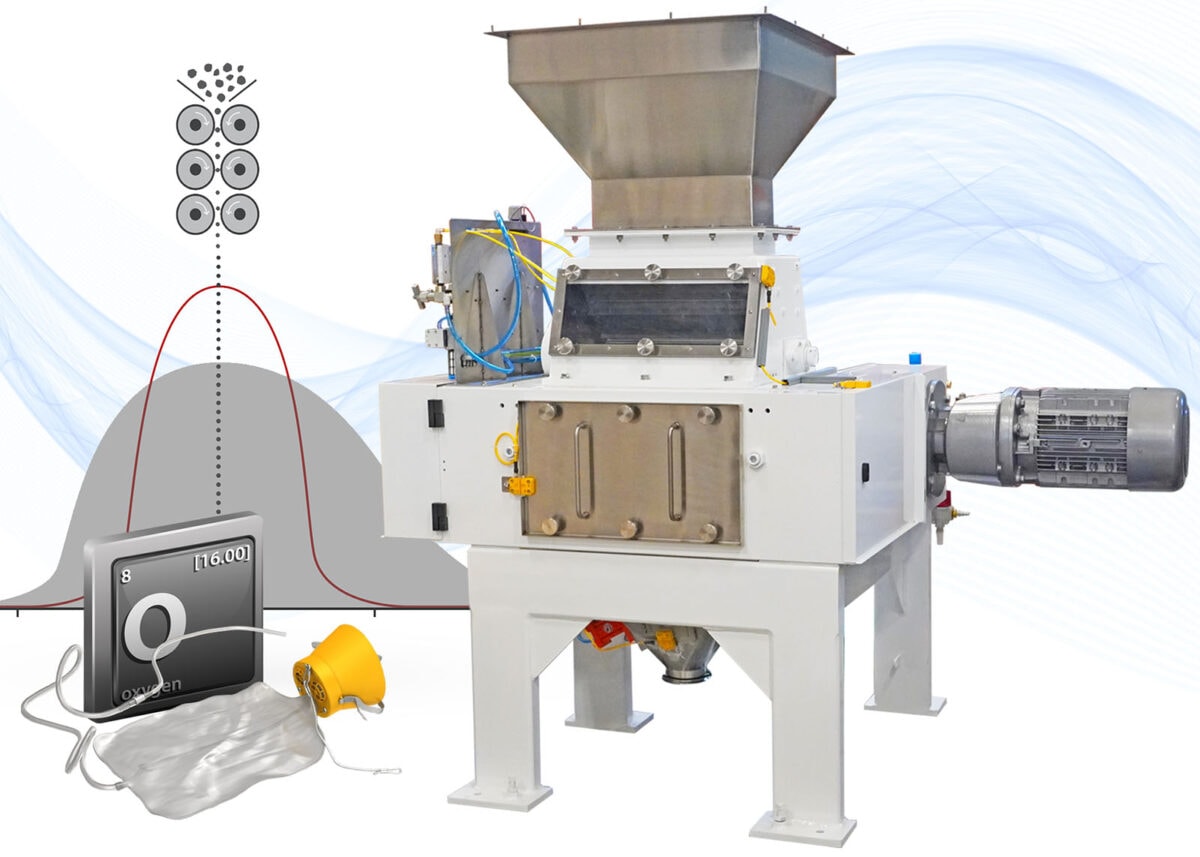In this case study, we explore the use of MPE’s precision particle size reduction equipment for grinding silicon granules into seed for Fluidized Bed Reactors (FBRs). This process is key to producing an extremely pure silicon at a fraction of the energy when compared to other refining methods.
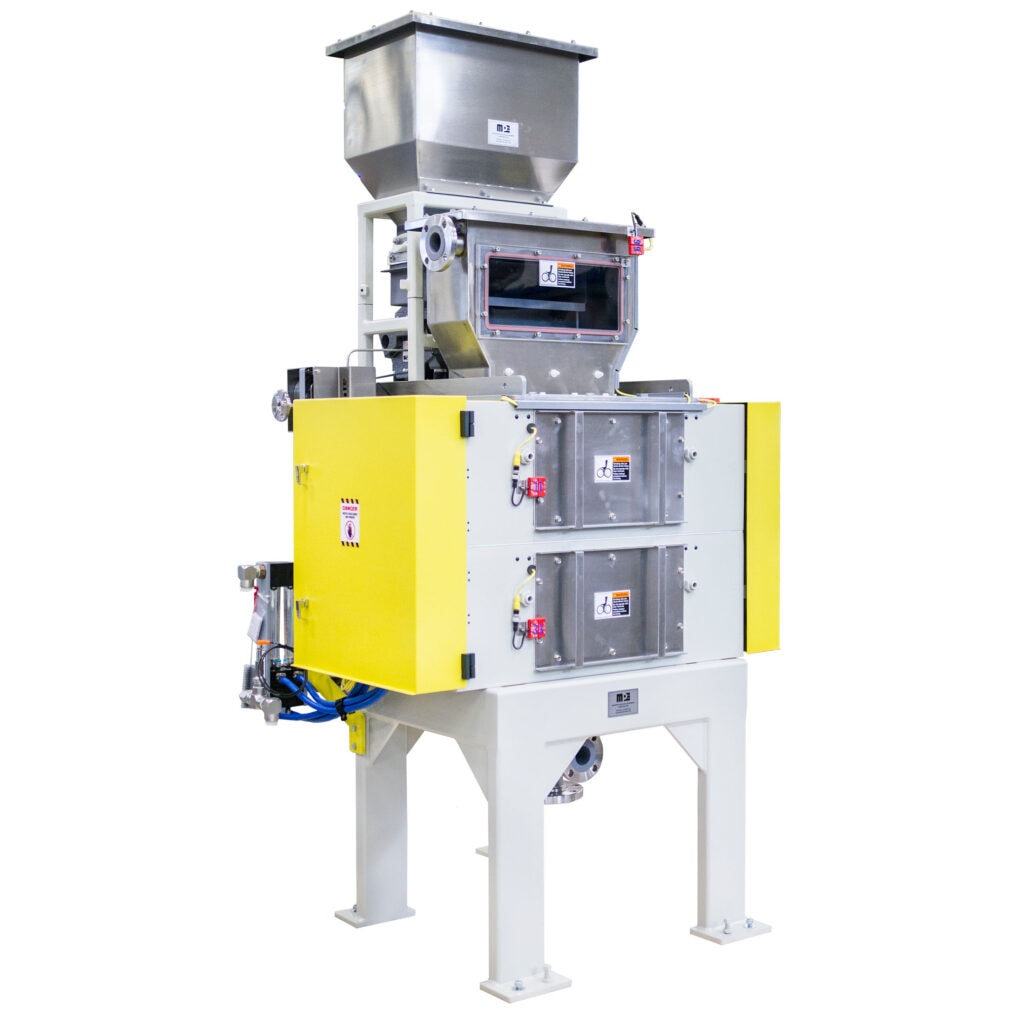
An MPE engineered Gran-U-Lizer with special ceramic rolls and non-ferrous product contact surfaces used for the size reduction process of silicon excels in its use for two reasons:
- It sizes down silicon granules into narrow particle size distributions (with a range of 200-450 μm) ideal for silicon seed; this is one of the variables important to maintaining the continuous FBR process.
- It maintains product stream purity. Normal size reduction technology would impart unacceptable levels of ferrous contaminants and/or other non-silicon elements. MPE’s Gran-U-Lizers impart significantly less contaminants than any other size reduction technology. This difference translates into higher purity silicon, which results in more profitability for the manufacturer.
Process Flow of Converting Silica to End Products, and Where MPE Fits in It
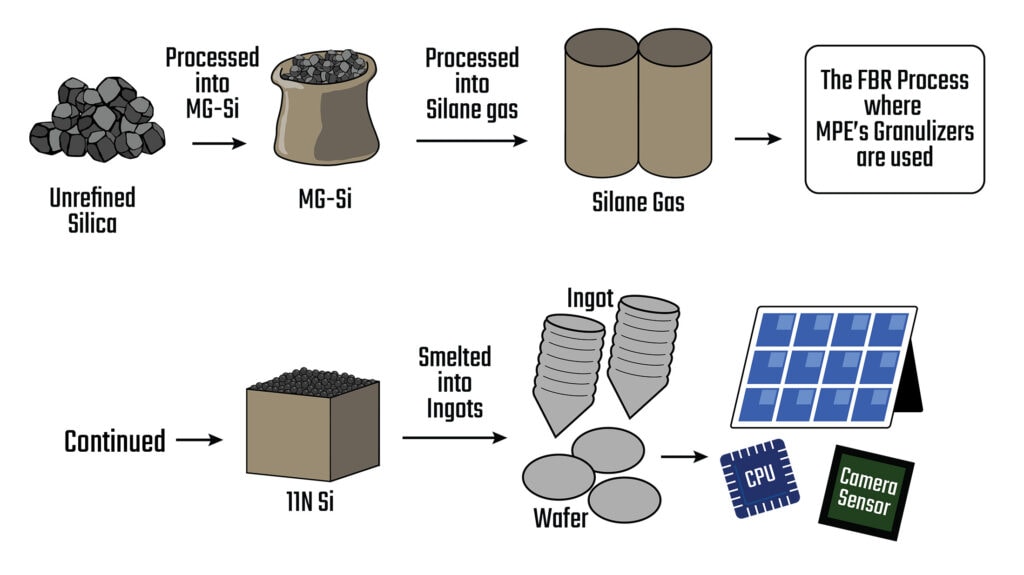
Unrefined silica (quartz typically) is first processed into Metallurgical Grade Silicon (MG-Si). Then the MG-Si is processed into Silane gas. Then Fluidized Bed Reactors (FBRs), with the help of MPE granulizers, combine Silane gas, silicon seed, and hydrogen to produce ultra-pure silicon pieces. Silicon pieces are then smelted into ingots and cut into wafers. These chips end up in many products like solar cells, camera sensors, and computer chips.
What are FBRs?
FBRs are a relatively newer refinement technology that turn Silane gas (SiH4) and silicon seed (Si) into 99.9999% pure (or greater) silicon granules. Producers then smelt the silicon granules put out from the FBR process into ingots. Manufacturers of computer chips, CPUs, image sensors, and photovoltaic cells cut these ingots into wafers to create their products.
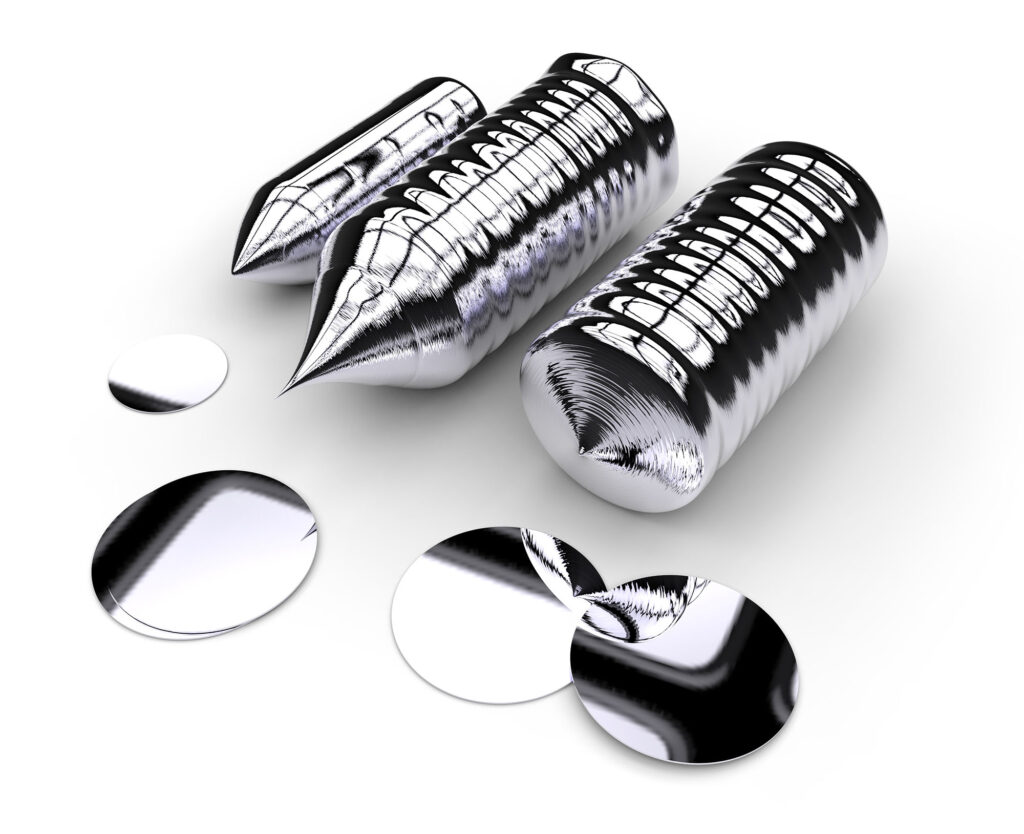
FBRs are a promising alternative to the Siemens method (also referred to as the Siemens process), a much more common manufacturing technology for producing refined silicon to make ingots out of. The Siemens method is a relatively mature technology, while FBRs are only recently being used on a large scale.
One key factor that sets these two technologies apart is their energy usage. The Siemens method consumes tremendous amounts of energy, and thus these kinds of facilities are only profitable where electricity is abundant and inexpensive. FBRs in contrast use 90% less energy to produce the same amount of silicon compared to the Siemens method. The lower electricity consumption means that FBRs can be operated profitably in many countries and regions that would otherwise not be profitable to operate in. Additionally FBRs yield many environmental benefits as well.
Why would producers choose the Siemens method over FBRs?
FBRs are hard to scale and operate. Plant engineers have only recently begun to overcome the challenges of scaling FBRs, which rely on fluid dynamics happening in a continuous process—not a batch process like in the Siemens method. Because FBR technology is only recently market-ready and requires a huge upfront investment, at the time of this article’s publication, FBRs only account for 5% of silicon production.
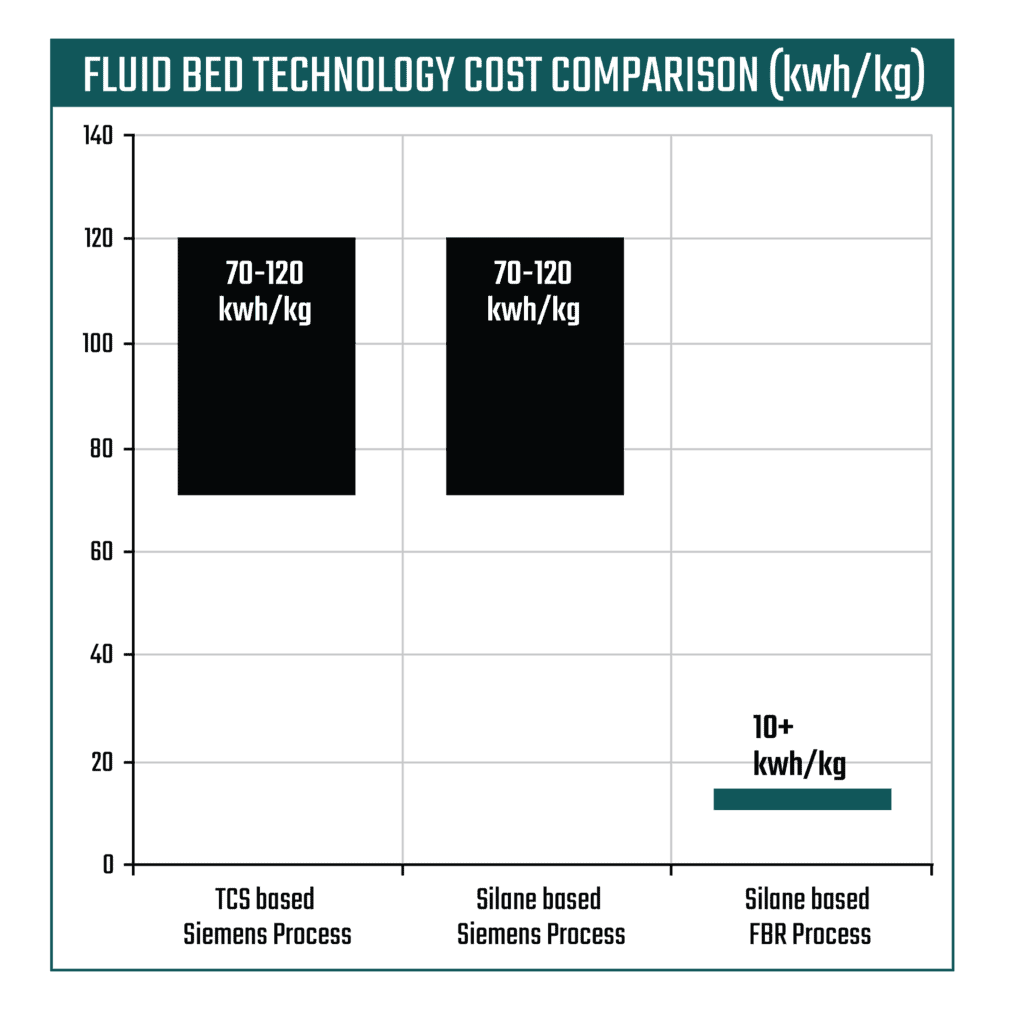
The Silicon market and importance of purity
Part of the success (i.e., profitability) of refiners is their ability to produce high purities of silicon, if not simply the highest purity possible. Higher purity silicon, for example, can be used for solar cells with greater efficiency, yielding greater electrical output and product lifespan.
Common uses of refined silicon based on purity are:
- Polycrystalline silicon is generally a minimum of “6N” purity (an industry term because of the six digits: 99.9999%). This is commonly used in PV cells, and thus may also be referred to as solar grade silicon (SiSG).
- Monocrystalline silicon (also referred to as single crystal silicon) requires ranges from 9N to 11N. This too is commonly used in PV cells (that have higher efficiency [i.e., electrical output] and which generally last longer). The highest grades like 11N, are also used to make semiconductors.
FBRs are capable of making up to 11N pure silicon. However, the more pure the resulting silicon is, the more important contamination is kept to a minimum (e.g., low parts per billion) during processing of the silicon seed. Precision particle size reduction, of which MPE is the preeminent world leader, is vitally important to the fluid dynamics inside FBRs. One way of imagining the inside of an FBR is creating an environment where a solid (silicon seed) and gases (hydrogen and silane) move together like a liquid. Therefore the precision particle size reduction of silicon seed must be done accurately, with as little contamination as possible, and at an industrial-scale rate to operate an FBR successfully.
How FBRs Work, and MPE’s Significance Behind FBRs
FBRs work by pumping silane gas and hydrogen into a chamber along with small highly purified silicon seed material. Inside the FBR, silane breaks down, silicon atoms deposit onto the seed, and the result is larger granules of highly pure silicon (up to 11N).
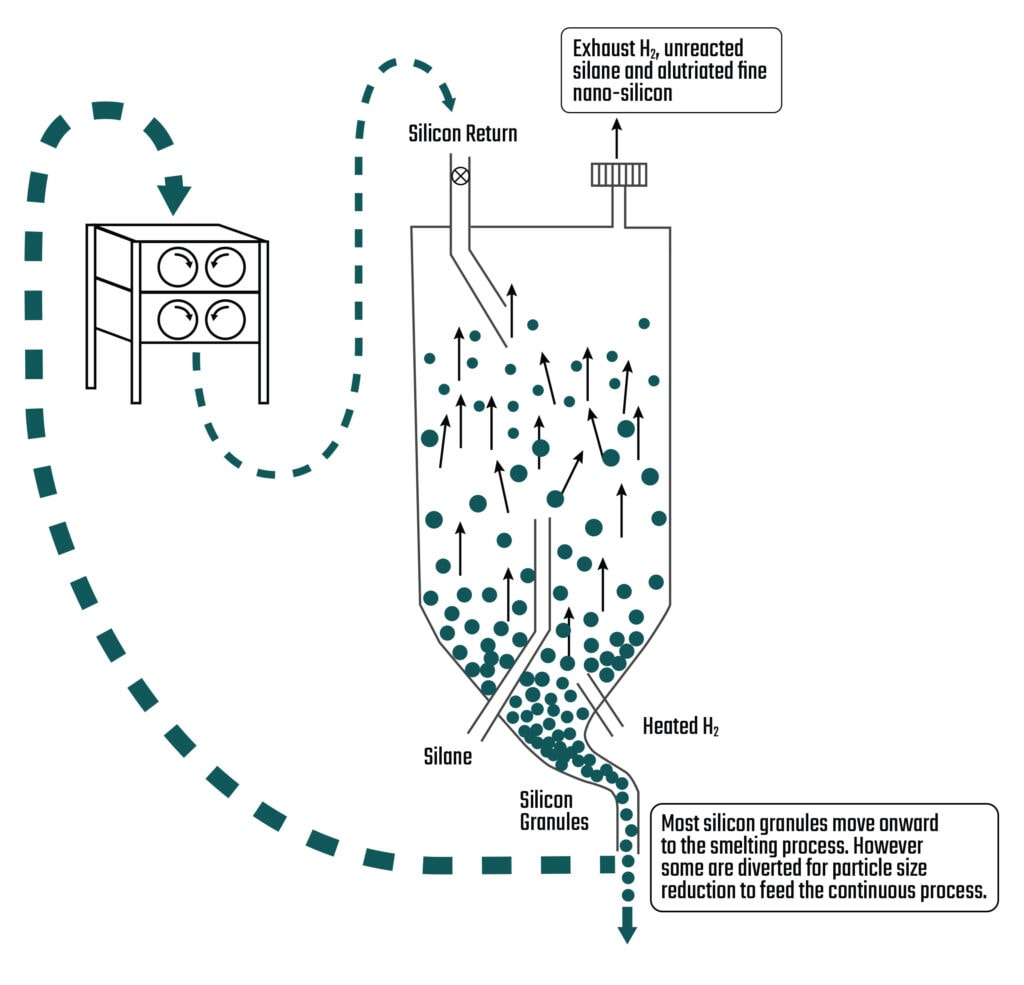
The larger silicon granules exit the FBR at the bottom. Most of these granules are taken away to a smelting process. However a small quantity of silicon granules is diverted from the product stream to become silicon seed again with the use of an MPE Gran-U-Lizer. The process is much more energy efficient compared to other refining methods, such as the Siemens method. The benefits of FBRs are realized several ways; more regions of the world are able to operate silicon refinement plants, lowering the cost of silicon-based end-user products like solar cells and semiconductors, and fewer environmental externalities.
To learn more about our engineered particle size reduction equipment for silicon, call +1-773-254-3929 or email [email protected].

